#Micro-animal
Text

#memes#wholesome#meme#micro#cat#angy#kitten#kitty#cat meme#cute#cat memes#animals#cutecore#cute animals#cute cat#cute cats#baby#Bebe#just a little guy
68K notes
·
View notes
Text
be a witch and go into a magical realm to collect supplies and find out which north american animal will choose you as its companion
#uquiz#familiar#witch#canada#united states#and mexico!#bc i want to go in depth in tropical rainforests in a different continent#and bugs aren't animals#and it's just major biomes not micro biomes so don't come for me
7K notes
·
View notes
Text
studio obake
make the micro music and short animation.
https://youtube.com/@studio_obake
#ghost#short animation#micro music#chillout#lo-fi animation#lo-fi music#original character#character#obake#studio obake#cute#kindness#おばけ#かわいい#やさしい
687 notes
·
View notes
Text

practicing a simplified style for animating! Thought yall would enjoy this test ^^
#g/t#giant tiny#macro/micro#giant/tiny#microphilia#handplay#giant#giantess#gt art#animation#2d animation#animator
2K notes
·
View notes
Text
pickles groove
#my art#metalocalypse#metalocalypse fanart#pickles fanart#metalocalypse pickles#pickles the drummer#dethklok#dethklok fanart#this animation is referenced from the scott pilgrim game#and is kinda a tiktok micro trend
485 notes
·
View notes
Text
Wet Beast Wednesday: tardigrades
Last week on Wet Beast Wednesday I covered the largest animals to ever exist on our planet. This week I'm going to pull a full 180 and cover the smallest animals yet on this series. Meet the tardigrade, the internet's favorite micro-animal the is said to be basically immortal. How true is that? Let's see.

(Image: an electron microscope image of a tardigrade. It looks a lot like a potato with eight stubby legs tipped with long claws. At the front is a small, circular mouth. It has no other discernable features. In the background are bits of plant matter that look like seaweed at this scale. End ID)
The tardigrades are 1,300 known species (and probably a lot of unknown ones too) in the phylum Tardigrada. They are also part of the superphylum Ecdysozoa, which are animals that grow by molting their outer cuticles or exoskeletons. In particular, the tardigrades are believed to be a sister group of the arthropods, the group that contains crustaceans, insects, isopods, and a lot of other things. Tardigrades are truly tiny, the largest species reaching a whopping 1.5 millimeters in length, though most species reach no more than 0.5 mm. They have round, segmented bodies with four pairs of legs that end in either claws or suction discs. The body segments consist of a head, three body segments with a pair of legs each, and a caudal segment with the final pair of legs. The first three legs are used for movement while the final pair points backwards and is used for grabbing onto substrate. All of the body segments except for the final one correspond to segments found in the head section of insects. Tardigrades are missing many hox genes, genes that direct the body plan during development. Their ancestors may have had a body plan more similar to insects, but the loss of the hox genes has compressed them into walking heads with a bit of butt. The mouth is tubular and sucks in food. In the mouth are stylets, needle-like structures used to pierce food objects. Once food is drawn into the mouth, a structure called the buccopharyngeal apparatus activates. This is a combination of spines and muscle that acts like an inner jaw that pulls food into the digestive tract. The buccopharyngeal apparatus is distinct enough to be used as a major identifying feature between species. Tardigrades are translucent and many images you've seen of them have false color to show the details or are 3D models based on scanning electron microscope imagery of them. Tardigrades molt their exoskeletons multiple times (up to 12) during their lifecycle. Some species are unable to poop normally and instead all their waste is discarded during the molt. It was formerly believed that tardigrades could exchange genes with each other without mating, a process called horizontal gene transfer that is seen in bacteria, archaea, and other micro-organisms. It has since been discovered that while still capable of horizontal gene transfer, it is quite a bit rarer in tardigrades than we thought.
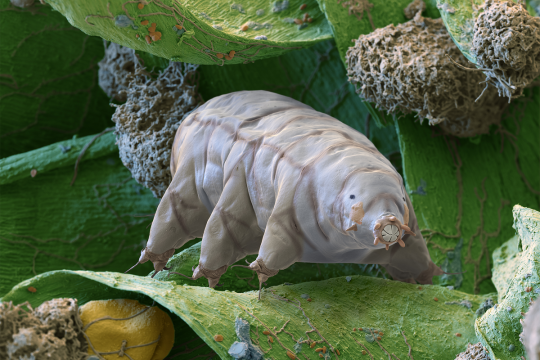
(Image: an electron microscope image of a tardigrade standing on a bit of plant matter. This one has a closed mouth with a ring of triangular tooth-like structures. It also has two simple eyes that look like black dots. End ID)
The name "tardigrade" means "slow walker", which is fitting as, despite their eight legs, tardigrades have a slow and awkward gait. This is the result of their legs being unjointed, only able to pivot at their connection to the body. Their gait has been compared to that of bears, hence why they are often called water bears and their discoverer, Johann August Ephraim Goeze, called them "kleiner wasserbär", meaning "little water bear". Tardigrades are found worldwide and have inhabited virtually every habitat, from the tops of mountains to the deep sea, from hot springs to the antarctic, from freshwater to saltwater. The one thing they have in common is a need to stay wet. Tardigrades can survive out of water as long as they can stay moist and are often found in mosses, hence another common name: moss piglets. The majority either eat plants or bacteria, but some will feed on smaller tardigrades or other micro-animals. Their famous survivability makes it easy for tardigrades or their eggs to be carried to new habitats by larger animals or other phenomena. Tardigrades are one of the first micro-animals to colonize a new habitat and they are a pioneer species, the first species to colonize a new environment and whose presence makes that environment fore suitable for other species to follow. Tardigrades are a major food source to other micro-animals and larger organisms. Most species have distinct males and females, though a few reproduce through parthenogenesis. In most cases, molting female will lay her eggs in her shed cuticle and males will them fertilize them. Other species have a form of internal reproduction. Males and females will court each other before mating and females will usually allow multiple males to fertilize her eggs. Female tardigrades are typically larger and more abundant than males. Eggs can take up to 14 days (species dependent) before hatching. All tardigrades of the same species have the exact same number of cells as each other. They are also born with the same number of cells they will have as an adult. Their growth is driven by enlargement of the existing cells rather than cellular reproduction making new cells. The lifespan ranges between a few months to a few years, depending on species.

(Image: a color photo of a tardigrade. It is a pale, translucent white, making it hard to make out details. Its body is curved, with the front end pointing at the camera. It has two simple eyes. End ID)
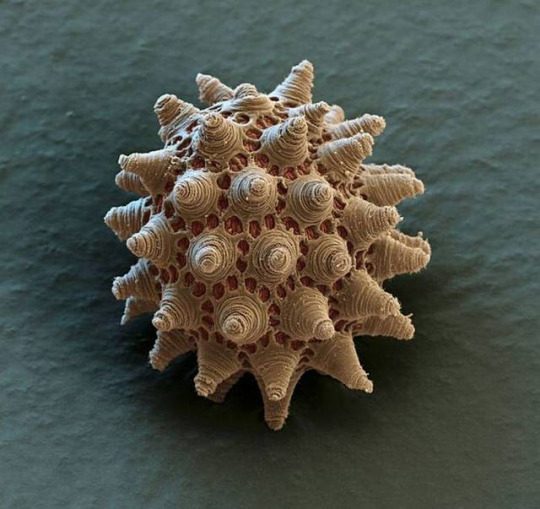
(Image: an electron microscope image of a tardigrade egg. It is round but covered in small pores and conical structures. End ID)
The most famous feature of tardigrades is their legendary durability. It is commonly said that tardigrades can survive just about anything (except for the things that are actually trying to kill them. They are prey to a lot of species after all). Among the things they can survive is extreme heat, extreme cold, dehydration, extremely high and low pressure, exposure to ionizing radiation (that's the scary kind), low oxygen environments, environmental toxins, heavy impacts, and the vacuum of fucking space. While the can survive in extreme conditions, tardigrades are not considered extremophiles. True extremophiles thrive in extreme environments and are negatively impacted by leaving them. Tardigrades can survive in extreme environments, but are negatively impacted and can't survive as well there as they can in less extreme places. The main trait that has allowed tardigrades to survive all five mass extinctions in history is cryptobiosis. Cryptobiosis is the rare ability for an animal to enter a state of dormancy where their metabolic processes come to an almost complete stop. While in cryptobiosis, metabolic activity drops to 0.01% normal and water content drops to 1% normal. In this state, the tardigrade is called a tun. Tardigrades usually enter cryptobiosis in response to arid conditions. One experiment showed that a species of tardigrade could last for at least 30 years in this state and return to normal lifestyle functions when exposed to water. Tardigrades will also enter cryptobiosis in response to low oxygen, toxic chemical exposure, increased or decreased temperature, and excessive salt content in the water. Tardigrades also show extreme resistance to both high and low pressure. They can live in 0 atmospheres of pressure and some species can survive up to 6,000 atmospheres, more than double the pressure at the bottom of the Marianas trench. More interesting is their ability to survive dangerous radiation. They can survive 1,000 times the dose of gamma radiation that humans can. Early tests focused on tardigrades in cryptobiosis and concluded that the extremely low water content of a cryptobiotic tardigrade doesn't leave much opportunity for the radiation to react with the animal. However it was later found that active and fully hydrated tardigrades are still considerably resistant to radiation. Studies into this resistance indicate that tardigrades can very efficiently repair damaged DNA and have unique proteins called Dsup that provides additional protection. Dsup introduced to human cells has provided additional protection against x-rays.
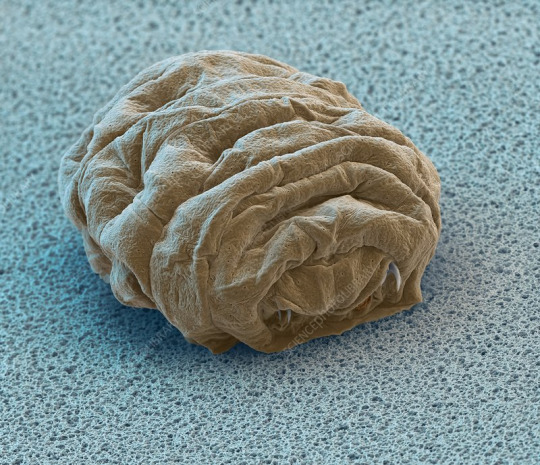
(Image: an electron microscope image of a tun - a tardigrade in cryptobiosis. It is smaller and very wrinkly, with the legs and mouth retracted into the body. End ID)
Tardigrades were the first animals to be exposed to the vacuum of space. They were exposed for 10 days, some in a state of cryptobiosis at the time of exposure and some still active. It was found that they were able to survive the vacuum when shielded from the sun's ultraviolet radiation, with those already in cryptobiosis doing better. Upon being rehydrated, many were able to resume normal life functions and successfully reproduce, though others died after being rehydrated. Those that were exposed to UV radiation fared much worse, with only a few hydrated individuals surviving. The individuals in cryptobiosis had a lower survival rate when exposed to UV than those not exposed to UV and were less successful at reproducing afterwards. Studies of tardigrade's space survival abilities and resistance to radiation could go a long way in helping human space travel. One of the largest dangers of space travel is that space is full of nasty radiation from the sun that Earth's magnetic field protects us from. Some scientists speculate about the possibility of accidentally seeding other planets or moons with tardigrades or other space-resistant organisms. This is a problem because introducing Earth life to other world has the potential to damage any native ecosystems and if we find life in space in the future we don't want to have to figure out if it's something we accidentally put there. While tardigrades could likely survive on other planets, they would eventually die without a food source. Some sources reported that tardigrades may have colonized the moon after an experiment with them crashed. Unfortunately, the moon is not crawling with tardigrades now. It's way too dry for them to exit cryptobiosis even if they survived the crash, which they probably didn't.
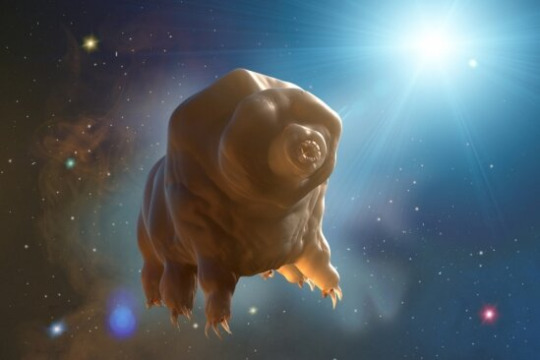
(Image: art of a tardigrade floating in the vacuum of space. End ID. Source: University of California - Santa Barbara)
#wet beast wednesday#tardigrade#water bear#moss piglet#micro animal#microbiology#marine biology#biology#zoology#ecology#animal facts#informative#science#space#astrobiology#radiation#cryptobiosis#tun#image described
154 notes
·
View notes
Note
may we appreciate jus some lil moths? Like the ones that like our lamps?
Well, I have never visited your lamps, so I don't know who visits. But I can definitely give you some small moths.. Here are some gorgeous little "micro-moths"...


Orange Micro Moth (Chrysoclista linneella), family Elachistidae, London, ONT, Canada
~5 mm
photograph by Jay Cossey

Orange-headed Epicallima (Callima argenticinctella), family Oecophoridae, eastern U.S.
~10-13 mm
photograph by WanderingMogwai
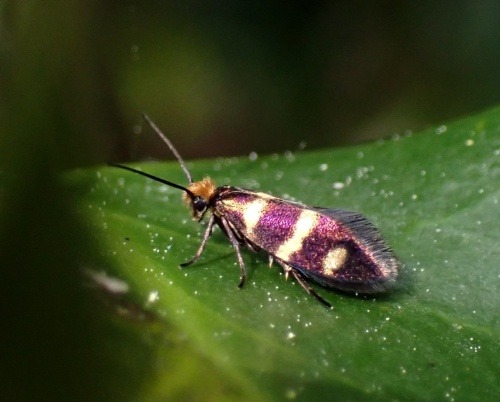
Micro Moth (Micropterix aureatella), family, Mictopterigidae, Charnwood Lodge, Leicester, UK
photograph by Kate Nightingale
92 notes
·
View notes
Text
Gayboy Micro-est
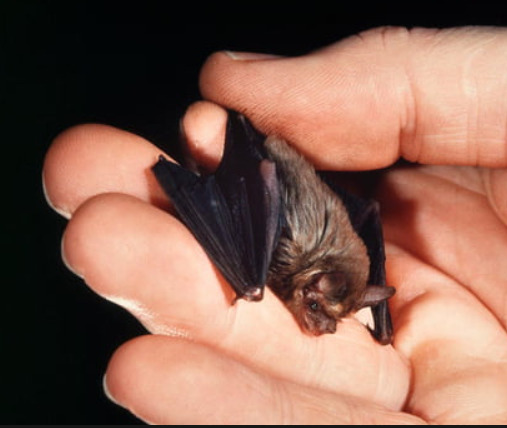
#Bumblebee Bat#Kitti's Hognosed Bat#bats of Asia#bat of the day#daily bat#bat#bats#batposting#Cute bats#cute animals#Teeny tiny#gayboy micro
258 notes
·
View notes
Text
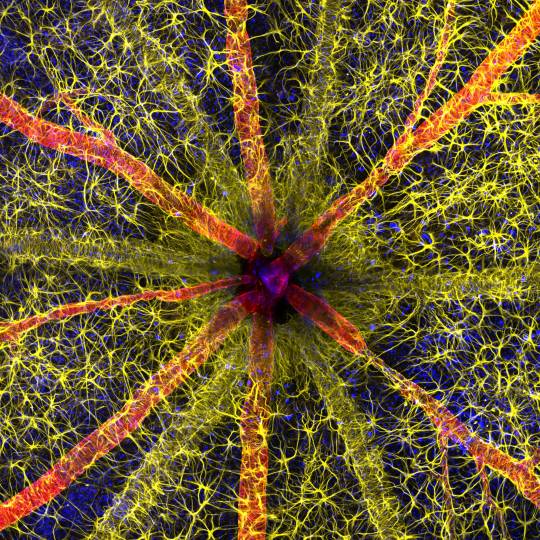
An Arresting Optic Nerve Tops the 2023 Nikon Small World Photomicrography Competition
255 notes
·
View notes
Photo

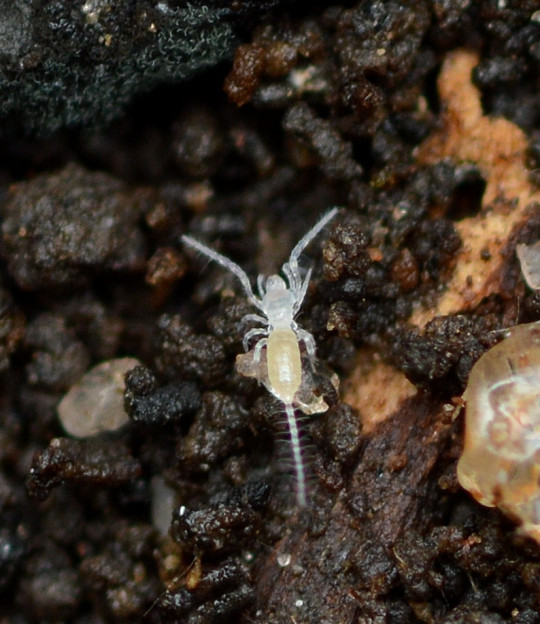





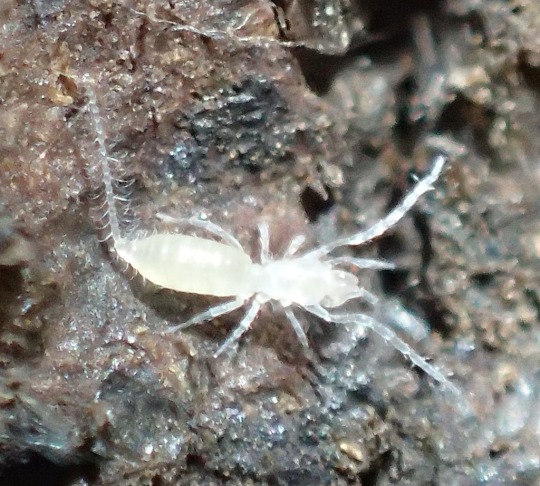
Micro whipscorpions, order Palpigradi, class Arachnida
Palpigrades or micro whipscorpions are an order of arachnids found in wet tropical and subtropical soils throughout the world. They measure no more than 3mm in length and do not have eyes. Little is known about their behavior, but they are thought to be mainly predators of other minuscule arthropods, though one species was found to feed on cyanobacteria.
Photo 1-4 by hydaticus, 4-6 by sparkn, and 7-8 by cedric_lee
760 notes
·
View notes
Text

70 notes
·
View notes
Text


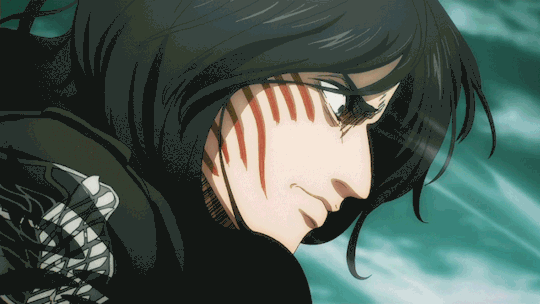
"Jean, if you think I'm a Titan for odd jobs and not cut out for combat, you're dead wrong! With the Cart's endurance, as long as I'm not taken out, I can keep going until I’ve won!”
#idk she’s my comfort character i can’t explain it#she’s such a badass i love her sm#i just love how they showed her little like micro injuries lol#she’s so lowkey about it n the rest of them are drama queens…#i gotta go to bed my god my eyes hurt#pieck finger#snk pieck#aot pieck#pieck snk#pieck aot#cart titan#shingeki no kyojin#attack on titan#shingeki no kyojin final season#attack on titan final season#aot edit#snk edit#jeanpiku#anime#anime gifs#animanga#dailyanime#anisource#tw flashing#h.gif
174 notes
·
View notes
Text
Phylum Round 1.5

Xenacoelomorpha: Small, flat, worm-like animals that live in marine and brackish sediments, and sometimes around hydrothermal vents. They can be free-living, symbiotic, or parasitic. A unique feature is that their stomachs lack nerve cells, unlike many other animals. Their evolutionary relationship to the rest of Animalia has been highly debated, and very little is known about their lifestyles.
Micrognathozoa: Presumably the smallest phylum, this group consists of a single species, Limnognathia maerski. In addition to being the smallest phylum, it may also be the smallest animal, with an average length of 100 micrometers. Despite this, it has complex jaws with 15 independently moving parts. Since this phylum has not been well-studied, all individuals that have been collected so far have been female.
#worm on worm violence#cw parasites#xenacoelomorpha#micrognathozoa#micro royale#animal bracket#poll bracket#bracket tournament#tumblr bracket#phylum round 1.5#phylum#phyla will now have a link to their propaganda tag for easy reference of propaganda from past rounds!#sorry this one's posting at a weird time lol I just wanted to take care of round 1.5 as fast as possible
95 notes
·
View notes
Photo

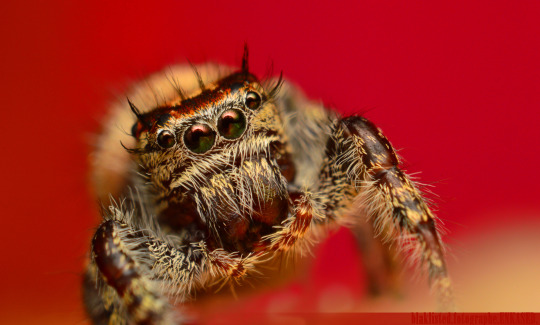
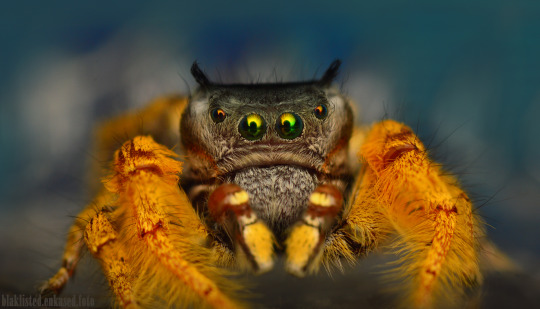

Curiosity
P.Comatus & P.Arizonesis
#salticidae#jumping spider#spood#spooder#macro#micro#nature#animals#photography#focus stacking#nikon#reverse macro#flash#photographers on tumblr#original#art#fine art#entomology#spiders
752 notes
·
View notes
Text

"C-can I hangout with you for a bit?"
#cartoon#digital art#illustration#art#artists on tumblr#cute#animals#anthro#doodle#coffee#bear#rolo#rolo bear#red#morning#small#micro#chonky#furry
190 notes
·
View notes
Text
🐛🍭💳
#a perfectly safe and reasonable offer#rabbitsquirrel#unreality#micro fiction#experimental music#experimental animation
478 notes
·
View notes